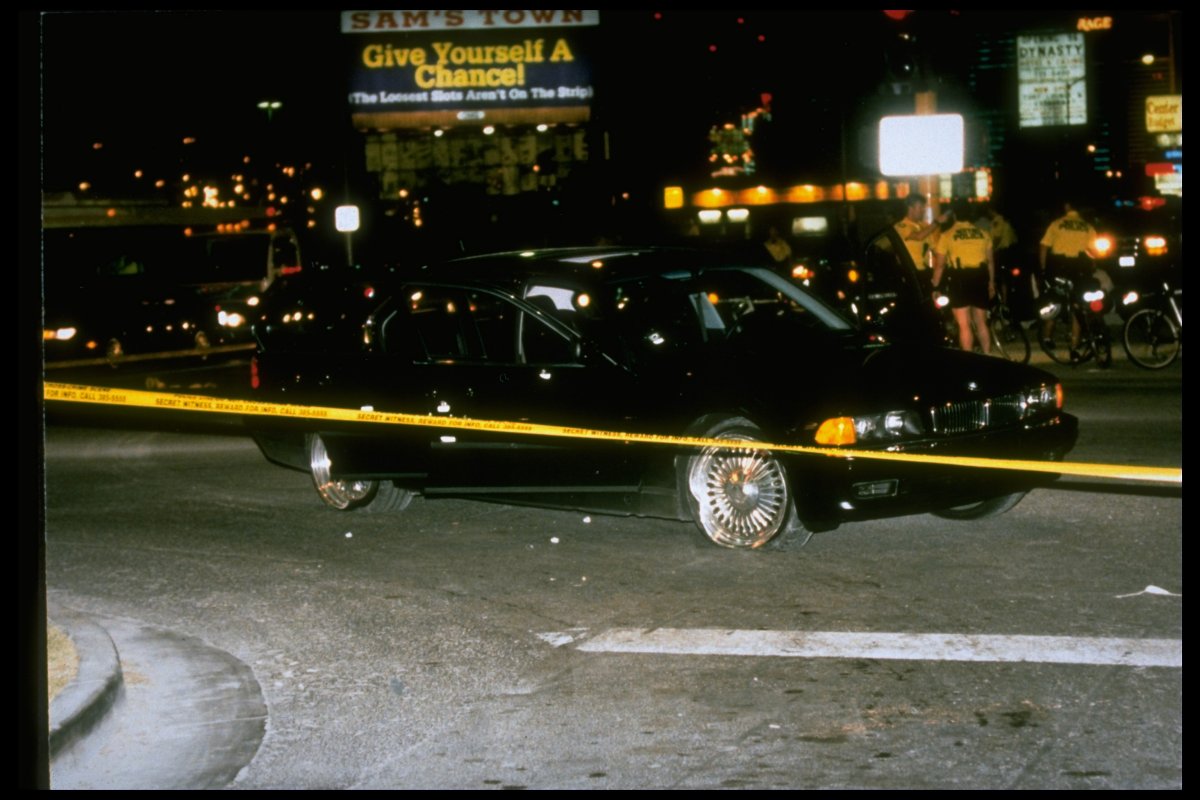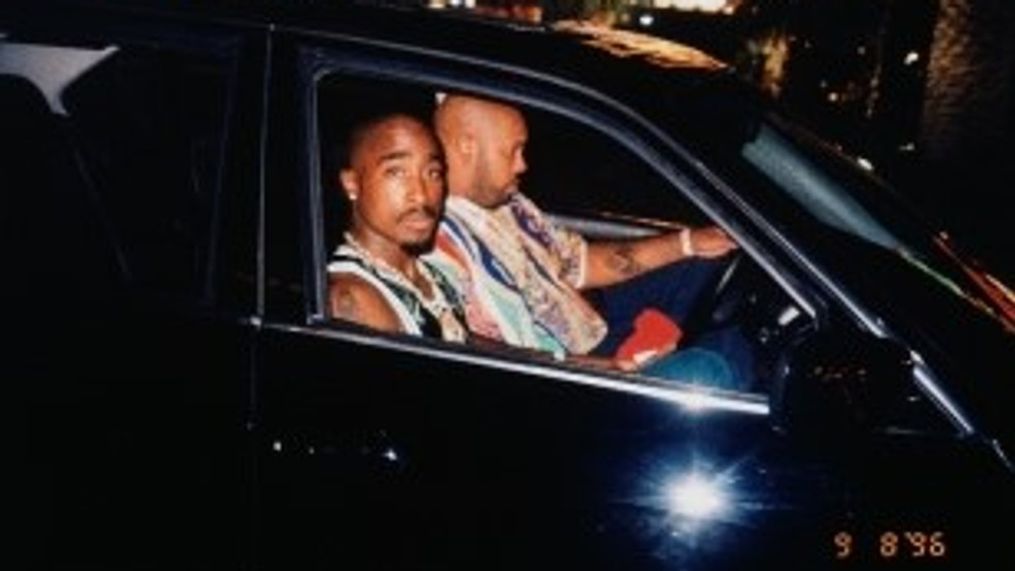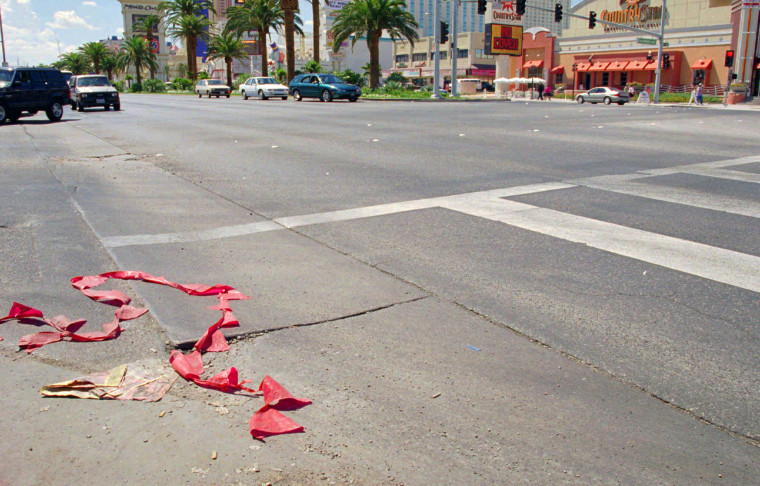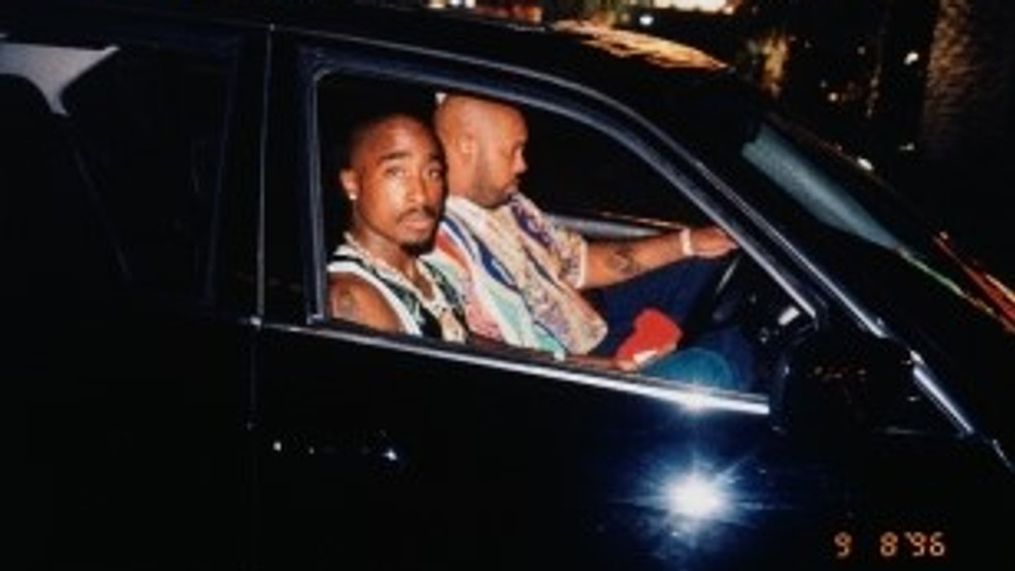On a crisp September night in 1996, the Las Vegas Strip became the backdrop for one of hip-hop’s most tragic and enduring mysteries. Tupac Shakur, a revolutionary artist who had redefined rap music, found himself caught in a deadly sequence of events that would shock the music world and leave an indelible mark on popular culture.

Image credit: New York Daily News
The evening began with excitement at the MGM Grand Hotel, where Mike Tyson’s boxing match had drawn a crowd of celebrities and fans. Tupac, dressed in a signature ensemble, was accompanied by Death Row Records CEO Suge Knight in a white BMW 750iL. Little did anyone know that these would be Tupac’s final moments of life.

Image credit: News 3 Las Vegas
As their vehicle stopped at a red light on the infamous Las Vegas Strip, a dark-colored sedan pulled alongside. In a split second, multiple gunshots rang out, shattering the night’s calm. Tupac was hit multiple times, with bullets piercing his chest, pelvis, and right hand. Despite the immediate rush to University Medical Center, the young rapper would succumb to his wounds six days later on September 13, 1996.
The investigation into Tupac’s murder quickly became one of the most complex and controversial in modern music history. Las Vegas Police faced significant challenges from the start. Witnesses were reluctant to come forward, and the street code of silence seemed to wrap the case in an impenetrable shroud of mystery. The initial leads were frustratingly sparse, with potential suspects melting back into the shadows.

Image credit: NBC News
Numerous theories emerged about the potential killers. Some pointed to gang-related tensions, while others highlighted the volatile East Coast-West Coast hip-hop rivalry that had been escalating. The music industry’s internal conflicts seemed to create a perfect storm of potential motives. Death Row Records’ tumultuous environment, marked by intense rivalries and street-level tensions, became a focal point of speculation.
Despite decades of investigation, the case remains officially unsolved. Modern developments have brought occasional glimmers of hope, with new witnesses and technological advances offering potential breakthroughs. Yet, the fundamental questions remain: Who pulled the trigger that night? What truly motivated the attack?
Tupac’s legacy transcends the mystery of his death. He remains a cultural icon, an artist who spoke truth to power, and a voice for a generation. His posthumous albums continued to be released, his poetry and music continuing to inspire millions. The unresolved nature of his murder has only amplified his legendary status, transforming him from a rapper to a symbol of unfulfilled potential and systemic injustice.
The impact of Tupac’s unsolved murder extends far beyond the music world. It represents a complex narrative of urban violence, artistic expression, and the challenges of achieving justice in a system often stacked against marginalized communities. His story continues to resonate, a powerful reminder of a talent extinguished too soon and a mystery that continues to captivate the public imagination.
References:
The Mob Museum – 25th Anniversary of Tupac Shakur Murder – link
NY Daily News – Tupac Shakur Las Vegas Shooting – link
NBC News – Arrest in Tupac Shakur Murder Case – link
Categories: Hip-Hop Culture, Music History, True Crime, Unsolved Mysteries, Unsolved Mysteries
Tags: 1996, Death Row Records, Hip-hop, Las Vegas, Music History, true crime, Tupac Shakur, Unsolved Murder
Religion: Not specified
Country of Origin: United States
Topic: True Crime
Ethnicity: African American


